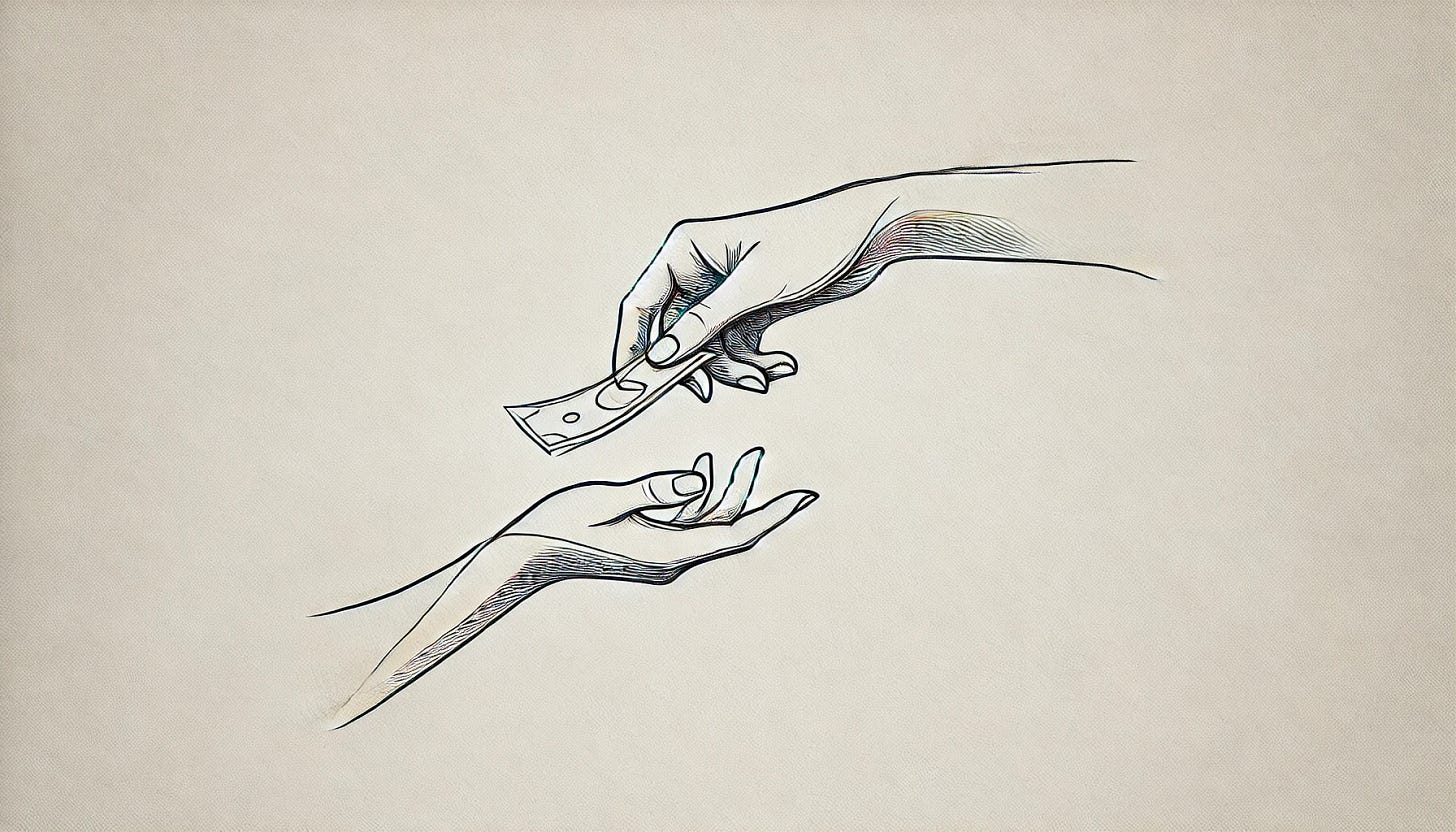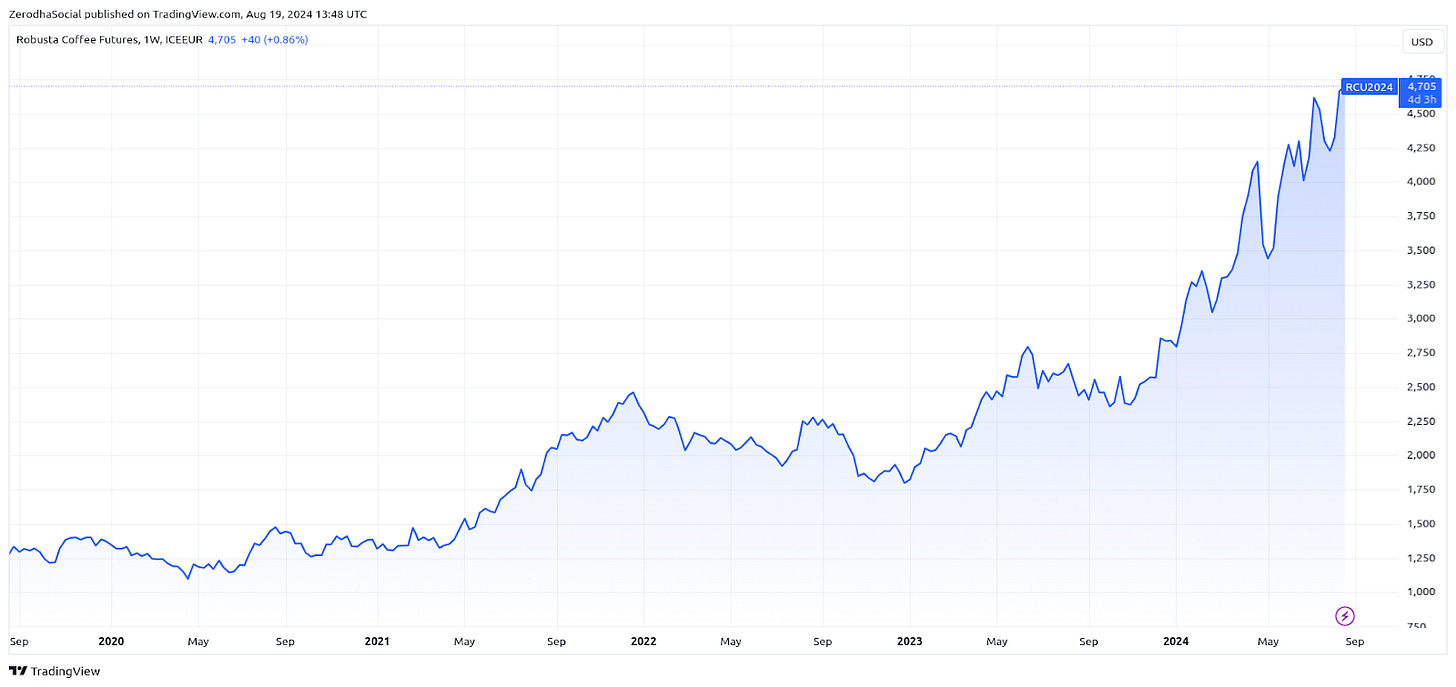Is this the end for peer-to-peer lending platforms?
Our goal with The Daily Brief is to simplify the biggest stories in the Indian markets and help you understand what they mean. We won’t just tell you what happened, but why and how too. We do this show in both formats: video and audio. This piece curates the stories that we talk about.
You can listen to the podcast on Spotify, Apple Podcasts or wherever you get your podcasts and video on YouTube.
In today’s episode, we look at 3 big stories:
End of peer to peer lending?
Cough up more money for coffee
Good news for social organisation
End of peer to peer lending?
If you're thinking about borrowing money, you typically have a couple of options: you can either go to a bank or borrow from non-bank lenders or fintech platforms that usually rely on banks and NBFCs. But sometimes, getting a loan from these sources might not work out. Maybe you don't have a credit history, or it's low because of some temporary issues. So, what's the alternative in this case?
Traditionally, people have turned to informal options like money lenders, but the problem there is that they often charge sky-high interest rates. What if there was a lender that fell somewhere between banks and moneylenders? This is where peer-to-peer (P2P) lending platforms come in.
P2P lending platforms connect borrowers to lenders. Imagine it like Amazon or Flipkart, but for loans. On one side, you've got people who want to lend money because they’re looking for returns a bit higher than fixed deposits but don't want to take the risk of investing in stocks. On the other side, you've got people who can’t get loans from banks for various reasons. In the middle, there's the P2P lending platform that connects both.
P2P lending has been around for as long as money has existed. But the first P2P platforms started in the US during the 2000 dot-com bubble. In India, some of these platforms have been around since 2012, but they were unregulated. In 2017, the RBI created a new category of non-banking financial companies called NBFC-P2P, and since then, they’ve been regulated.
The early P2P platforms did what their name suggests—they simply connected lenders and borrowers. But this approach didn’t work well due to issues like lenders struggling to screen borrowers, platform-related problems like adverse selection, high default rates, and the tedious nature of lending to multiple borrowers.
Because of these challenges, P2P never really took off in India, and the platforms stumbled for a while. But some P2P platforms found innovative ways to address these problems.
Instead of letting lenders pick individual borrowers, the platform automatically split the lender's money among multiple borrowers. Lenders could still choose borrowers, but letting the platform do it was easier and reduced the risk of defaults.
They also allowed lenders to sell their loans before the full term of the loan by creating a secondary marketplace, similar to stocks.
Some platforms even offered to cover the risk of defaults from the fees they earned—that is, the difference between the lending rate and the borrowing rate.
Because of these developments, P2P became less risky and was marketed as an investment option that offered better returns than fixed deposits and bonds. Some platforms, directly or indirectly, made it seem like the returns were guaranteed.
But on August 16, the RBI issued new guidelines that could potentially put an end to most of these practices. Let’s break down what these new RBI guidelines say:
P2P platforms can't provide any credit guarantees or enhancements. That means they can't tell lenders that the platform will cover or insure their losses. If lenders lose money, they have to take the hit.
In the earlier model, if you, as a lender, invested Rs. 1 lakh, the platform would automatically split the loan among hundreds of borrowers. This required just one authorization. Now, the RBI says every loan has to be approved and an agreement signed. That means hundreds of OTPs, e-signs, etc., breaking the diversification benefits platforms provided.
As soon as a lender transfers the money, the platform has to send the money to the borrower within T+1 or else, it has to send the money back to the lender.
P2P platforms also cannot promote peer-to-peer lending as an investment product with features like tenure-linked assured minimum returns, liquidity options, etc.
These are big changes that will significantly impact the volumes and, more importantly, the business's reputation. Will lenders think the RBI is imposing these actions because there's something wrong with the platforms? Will they stop trusting P2P?
Why is the RBI making these changes?
We can't know for sure, but here’s our guess:
The RBI governor has mentioned multiple times that banks are losing deposits to other investment options. Is the RBI worried that P2P has become more attractive than bank fixed deposits?
Was the RBI concerned that P2P was being promoted as an investment with assured returns, even though P2P platforms are lenders, not investment management companies?
P2P loans were also sold by many mutual fund distributors. Was there some communication between SEBI and RBI?
Like we said, we don't know for sure. Only time will tell.
In their defense, P2P platforms have argued that they were always subject to RBI audits, and RBI knew all about their business models. They were transparent about how they functioned. They also argue that by offering an option to diversify among loans and flexible performance-based fee structures, they were providing a better structure for lenders. Because if lenders do one-to-one lending, they are exposed to 100% of the risk now that there’s no platform in between to reduce the risks.
Overall, this is a significant challenge for the industry, and it remains to be seen how things will play out going forward.
Cough up more money for coffee
Did you know that over 10 billion kilograms of coffee were consumed around the world in 2023 alone? Coffee is like the fuel that keeps the world going.
Can you even imagine starting your day without a cup of coffee? We certainly can’t.
But the coffee that we all enjoy might be getting more expensive because coffee prices have been climbing due to bad weather, shipping issues, regulatory concerns, and other factors. Before we dive into why, let’s talk numbers.
As of now, Robusta Coffee Futures, which trade in London, are going for between $4,500 to $4,700. Prices have shot up by 60% this year alone.
This is wild because these prices are nearly double what was considered very high just a year ago. So, what’s causing this?
Adverse weather patterns have seriously impacted coffee production in Vietnam, the world’s second-largest producer. Even though Vietnamese output was only about 5% below expectations, it’s a big deal because this comes on the heels of disappointing harvests in Brazil in previous years. The market still hasn’t adjusted to the supply-demand imbalances caused by these volatile harvests.
Source: Visual Capitalist
If you’ve been following along with us, you might remember when we discussed the ongoing shipping crisis. In short, global trade has been hit hard due to conflicts in the Red Sea region, a crucial waterway connecting Asia and Europe. These conflicts are forcing ships to take longer routes around Africa, disrupting global trade, and coffee is no exception.
The European Union recently passed a regulation to ensure that products imported into the EU haven’t contributed to deforestation. This regulation will take effect at the end of 2024. Coffee farmers now have to prove they haven’t contributed to deforestation, which is no easy task. Sometimes farmers need to clear trees to grow coffee, but that doesn’t mean they’re deliberately causing deforestation. To comply with the regulations, they’ll need to replace the lost tree cover, which, as you can imagine, is easier said than done. This is a significant issue for the global coffee market because the EU imports about 30% of the world’s coffee.
Back in 2021, Brazil, the world’s largest coffee producer, faced a severe drought followed by the worst frost in 27 years. Coffee fields across Brazil were covered in ice. Estimates suggest Brazil lost about 20% of its coffee production that year. When you add in disruptions caused by COVID-19, it was a tough time for coffee importers worldwide.
Source: Our World in Data
There are two main types of coffee grown globally: Arabica and Robusta. Brazil mostly grows Arabica coffee, which is important because Brazil produces 40% of the world’s coffee. The 2021 crisis in Brazil led some large buyers to switch to Robusta coffee instead of Arabica due to better availability and lower prices. Even though Arabica harvests have recovered in Brazil, many buyers haven’t fully switched back—likely because they’re worried about another disaster like 2021.
With all these factors in play, experts suggest coffee prices will stay volatile for the rest of 2024. A recovery is expected in 2025 with hopes of a strong harvest in Brazil. But with the unpredictability of climate change and the memory of the 2021 Brazil incident, this market will likely remain sensitive to news and weather forecasts for a long time to come.
Good news for social organisations
At some point in our lives, we’ve probably all made a donation to an organization that helps uplift the less privileged. Whether it was back in school or college, at workplaces, or just on our own, most of us have contributed in some way in the past.
Now, while donating is undoubtedly a noble cause, the biggest concern often is legitimacy—whether your money will truly be used for the right purpose. Then there’s also the challenge of figuring out if a charitable organization is credible. This concern is one of the main reasons why social organizations struggle to raise funds.
Adding to this, India is a country with immense challenges. The problems are so vast that not all of them can be solved by the government alone. We need others, like wealthy individuals, private organizations, and other social groups, to step in and help fill the gaps.
To address some of the issues that social organizations face, a platform called the Social Stock Exchange (SSE) was created under the regulatory oversight of SEBI. Essentially, the SSE acts as a bridge between donors and organizations doing legitimate social work.
Finance Minister Nirmala Sitharaman first proposed this concept in the 2019 Union Budget, and by 2023, the SSE became operational.
In the year since its launch, about 10 social organizations have listed themselves on the SSE and have raised capital in the range of 1-2 crores each. But recently, a non-profit organization called Swades raised 10 crore rupees via the SSE. Swades is run by Ronnie Screwvala, who’s well-known for founding the ed-tech startup UpGrad.
This is a significant milestone because Swades’ 10 crore raise is the largest capital raise on the Social Stock Exchange so far. Over 150 individuals from various industries participated in this, including well-known names like Infosys Co-founder Nandan Nilekani, former HDFC Chairman Deepak Parekh, and Mahindra Group Chairman Anand Mahindra.
With such big names showing confidence in the SSE, this platform could soon become the preferred way for smaller investors to donate money to social welfare organizations in a credible manner.
To support this cause, we at Zerodha have also invested about 4.5 crores in 7 organizations listed on the SSE.
Thank you for reading, if you have any feedback, do let us know in the comments.








Today’s article on P2P, Global demand rise on coffee and SSE was interesting and useful. Small suggestion: if we had also known on the coffee supply demand in India and its market. Thanks
What about india will coffee take a beating as only southetn part of india mainly south karnataka consume more of coffee the other part ofbpur countryvconsume more of Tea.